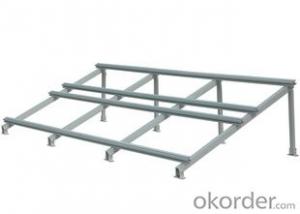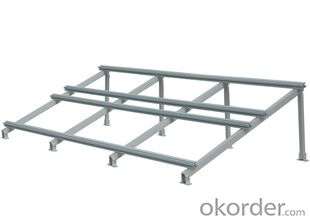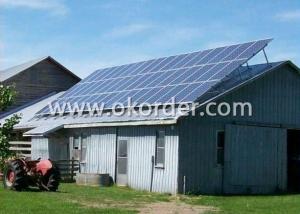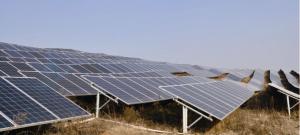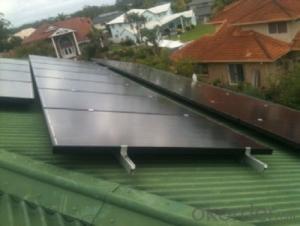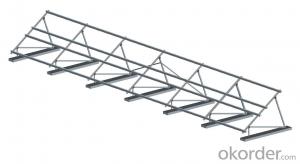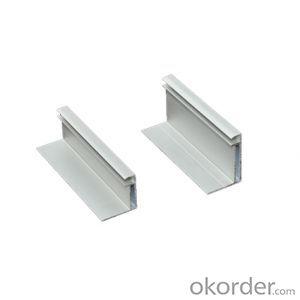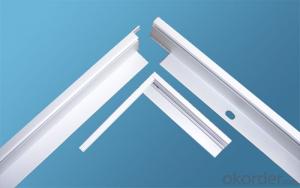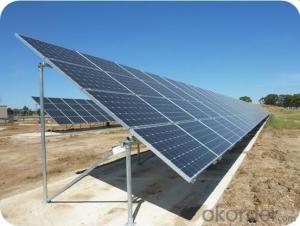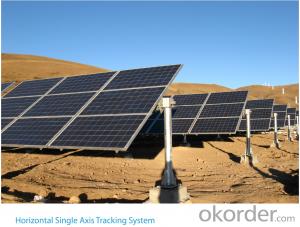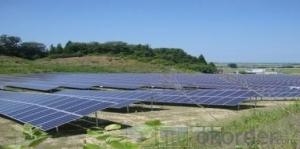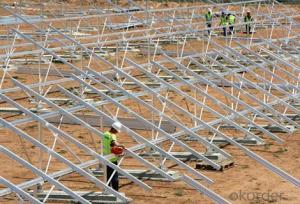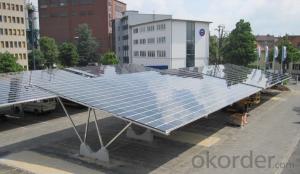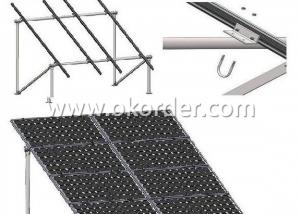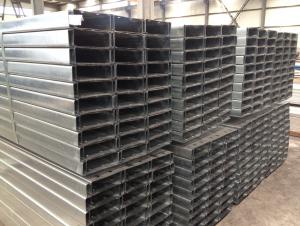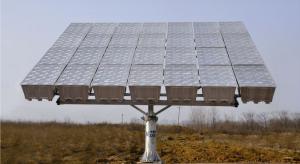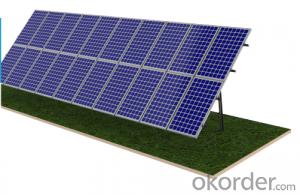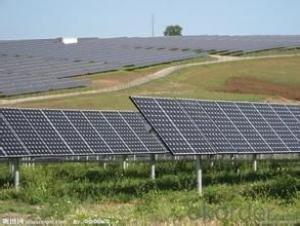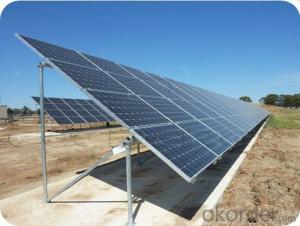Ironridge Solar Mounting System
- Loading Port:
- China Main Port
- Payment Terms:
- TT OR LC
- Min Order Qty:
- -
- Supply Capability:
- -
OKorder Service Pledge
Quality Product, Order Online Tracking, Timely Delivery
OKorder Financial Service
Credit Rating, Credit Services, Credit Purchasing
You Might Also Like
technical data of solar mounting system: | |
| installation site: | roof & ground |
| color: | silvery |
| wind load: | up to 60m/s |
| snow load: | up to 1.4KN/m2 |
| PV modules: | frame or frameless |
| module orientation: | portrait or landscape |
| standards: | AS/NZS1170 |
| SGS | |
| materials: | aluminum 6005-T5 |
| steel Q235 | |
| stainless steel | |
| anti-corrosive: | anodized |
| galvanized | |
Specifications
solar mounting system
1,Easy Installation
2,Safety and Reliability
3,Flexibility and Adjustable
4,10 Years QA
advantage of solar mounting system: | |
easy installation: | high pre-assembley in our factory |
| not require onsite weld and cut | |
flexibility & compatible: | can be installed with the most solar panels |
safety & reliability: | have been tested to guarantee its structure and load-carrying capacity. |
customized of solar mounting system: | |
customization: | available |
OEM: | available |
- Q: Can a solar mounting system be used with different panel orientations?
- Yes, a solar mounting system can be used with different panel orientations. The flexibility of the mounting system allows for adjustments to be made to accommodate various panel orientations, such as portrait or landscape. This ensures optimal sunlight exposure and efficient energy production regardless of the orientation of the solar panels.
- Q: Are there any specific requirements for canopy design when using a solar mounting system for canopies?
- Yes, there are specific requirements for canopy design when using a solar mounting system. These requirements include factors such as the structural integrity of the canopy to withstand the weight and wind loads of the solar panels, proper orientation and tilt angle for maximum solar exposure, sufficient space for panel installation and maintenance, and compatibility with electrical wiring and connection points. Additionally, consideration should be given to factors like shading and clearance to ensure optimal performance of the solar system.
- Q: Can a solar mounting system be installed on a rooftop with a thatched roof?
- Yes, a solar mounting system can be installed on a rooftop with a thatched roof. However, special considerations and techniques may be required to ensure the stability and durability of the mounting system on a thatched roof.
- Q: Can a solar mounting system be installed on a rooftop with a wood shingle roof?
- Yes, a solar mounting system can be installed on a rooftop with a wood shingle roof. The installation process would involve ensuring that the mounting system is securely attached to the roof structure, taking into consideration the weight of the solar panels and any necessary reinforcements. Additionally, proper flashing and sealing techniques would be employed to maintain the integrity of the roof and ensure waterproofing.
- Q: Can solar mounting systems be installed on remote or off-grid locations?
- Yes, solar mounting systems can be installed on remote or off-grid locations. These systems are designed to be flexible and adaptable, allowing for installation in areas without access to the traditional power grid. Off-grid solar installations often utilize batteries to store excess energy generated during the day for use during the night or when the sun is not shining. This makes solar mounting systems a viable option for powering remote locations or areas with limited access to electricity.
- Q: How does a solar mounting system affect the roof's maintenance requirements?
- A solar mounting system can affect the roof's maintenance requirements by increasing the need for regular inspections, cleaning, and potential repairs. The installation of the mounting system involves drilling holes and attaching brackets to the roof, which can create potential leak points if not properly sealed. Additionally, the presence of solar panels can make it more challenging to access and maintain the roof surface, restricting the ability to inspect and repair any underlying issues. Therefore, regular maintenance and care are essential to ensure the roof's integrity and prevent any long-term damage.
- Q: Are there any specific requirements for skylight or atrium design when using a solar mounting system?
- Yes, when using a solar mounting system for skylights or atriums, there are specific requirements to consider. Firstly, the design should accommodate the weight of the solar panels and mounting system, ensuring the structure can support the additional load. Additionally, the orientation and angle of the skylight or atrium should be optimized for maximum solar exposure, allowing the panels to capture the most sunlight throughout the day. It is also important to ensure proper ventilation and airflow around the solar panels, as excessive heat can decrease their efficiency. Overall, the design should integrate the solar mounting system seamlessly with the skylight or atrium, taking into account structural integrity, solar exposure, and ventilation.
- Q: What are the advantages of using a solar mounting system?
- There are several advantages of using a solar mounting system. Firstly, it allows for optimal positioning and angle adjustment of solar panels, maximizing their exposure to sunlight and therefore increasing energy production. Additionally, solar mounting systems provide a secure and stable foundation for the panels, ensuring their longevity and reducing the risk of damage. They also simplify the installation process, making it easier and more efficient. Lastly, solar mounting systems are typically adjustable and can accommodate various types of roofs or terrain, making them versatile and adaptable to different installation scenarios.
- Q: Are there any specific requirements for wiring when using a solar mounting system?
- Yes, there are specific wiring requirements when using a solar mounting system. The wiring should be sized appropriately to handle the current generated by the solar panels. It should also be properly grounded and protected to ensure safety. Additionally, the wiring should be installed in a way that minimizes potential shading or damage to the panels.
- Q: Are there specific considerations for installing solar mounting systems in different climates?
- Yes, there are specific considerations for installing solar mounting systems in different climates. Factors such as temperature, wind speed, snow load, and rainfall levels can vary greatly depending on the climate. Therefore, it is important to choose a mounting system that is suitable for the specific climate conditions to ensure optimal performance and durability. For example, in areas with high wind speeds, it is crucial to use robust mounting systems that can withstand strong gusts. Similarly, in regions with heavy snowfall, the mounting system should be designed to handle the added weight and prevent snow accumulation on solar panels. Additionally, the choice of materials and installation techniques may also differ based on the climate to ensure long-term functionality and stability of the solar mounting system.
Send your message to us
Ironridge Solar Mounting System
- Loading Port:
- China Main Port
- Payment Terms:
- TT OR LC
- Min Order Qty:
- -
- Supply Capability:
- -
OKorder Service Pledge
Quality Product, Order Online Tracking, Timely Delivery
OKorder Financial Service
Credit Rating, Credit Services, Credit Purchasing
Similar products
Hot products
Hot Searches
Related keywords
